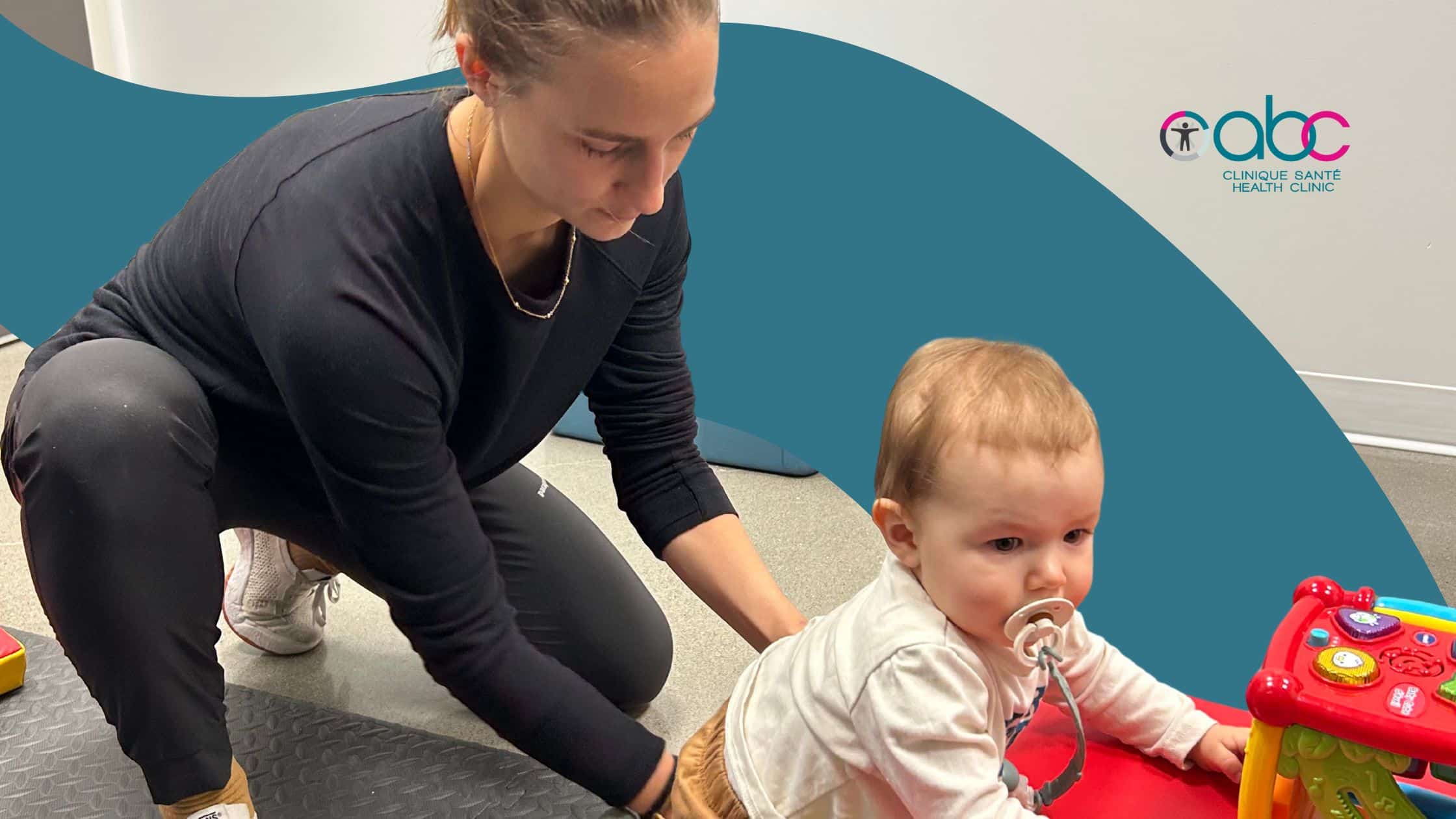
Growing children and adolescents often complain of pain. But how can you tell if it’s just growing pains or actual growth-related injuries? In this article, Adèle Payette, a pediatric physiotherapist at ABC Clinique Santé in Quebec City, explains the differences, the signs to watch for, and solutions to relieve your child’s pain.
What is growing pain?
Growing pains are normal and very common in children aged 3 to 14. They occur mainly before puberty, during growth spurts. They are caused by bones growing faster than muscles, creating muscle tension.
Typical signs of growing pains:
- Diffuse, vague pain (calves, thighs, shins, behind the knees).
- Symmetrical pain (affects both sides).
- Episodic pain: occurs mainly in the evening or at night.
- The child is generally pain-free in the morning and active during the day.
- No painful reaction to palpation and no signs of inflammation (no redness or heat).
What can be done to relieve the pain?
- Apply heat to the muscles.
- Give gentle massages and light stretches.
- Give acetaminophen or ibuprofen if necessary.
- Reassure the child: these pains are normal and will disappear over time.
Growing pains: when should you be concerned?
Unlike normal pain, growing pains affect the growth plates (softer areas located at the ends of long bones).
These plates are vulnerable because muscles pull on them during growth spurts.
Signs of a growth injury:
- Constant pain that does not go away after a night’s sleep.
- Incapacitating pain that prevents walking or playing sports.
- Pain that worsens over time.
- Appearance of a bump or deformity (knee, heel, elbow, shoulder).
These injuries often occur in:
- the knee (front of the tibia),
- the heel,
- the elbow, or the shoulder.
When should you consult a physical therapist?
Consult a pediatric physical therapist if:
- pain limits your child’s activities,
- the pain is constant or getting worse,
- a lump or deformity appears.
- The role of the physical therapist:
- To relieve pain quickly.
- To provide appropriate exercises.
- Prevent worsening and promote a return to activities.
- Advise on prevention (multisports, training management, load adaptation).
Prevention: the key to active, healthy children
To reduce the risk of growth-related injuries:
- Avoid excessive practice of a single sport (e.g., basketball seven times a week).
- Encourage a multisport approach.
- Respect rest and recovery periods.
- Consult a physical therapist for personalized advice.
Conclusion
Growing pains are normal and temporary. However, growth-related injuries require special attention. If the pain is constant, incapacitating, or accompanied by deformity, a consultation with a physical therapist is essential.
With proper follow-up, these issues usually resolve well and allow your child to quickly resume their activities.
Visit the clinic nearest you:
-
Adèle Payette
Massage therapist




